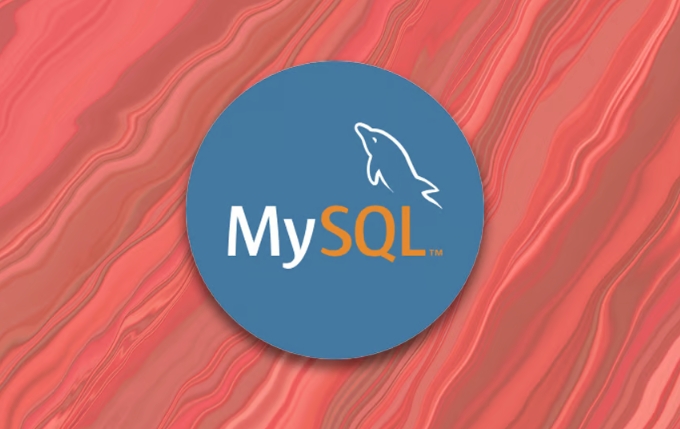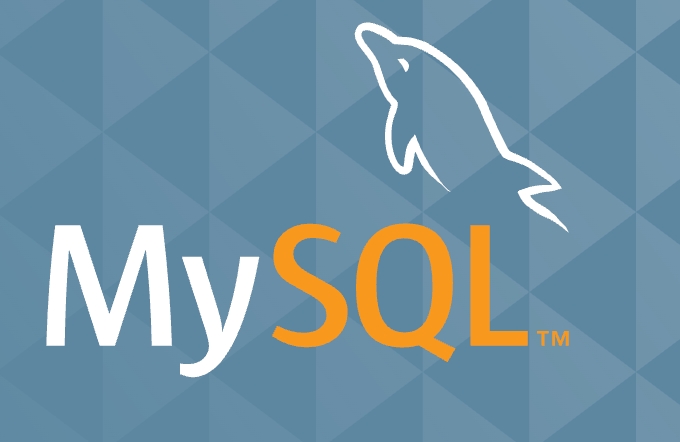mysqldump is a common tool for performing logical backups of MySQL databases. It generates SQL files containing CREATE and INSERT statements to rebuild the database. 1. It does not back up the original files, but converts the database structure and content into portable SQL commands; 2. It is suitable for small databases or selective recovery, and is not suitable for fast recovery of TB-level data; 3. Common options include --single-transaction, --databases, --all-databases, --routines, etc.; 4. Use the mysql command to import during recovery, and foreign key checks can be turned off to improve speed; 5. It is recommended to test backup regularly, use compression, automated scheduling, naming with metadata and monitoring disk space.

When you need to back up your MySQL databases, mysqldump is one of the most commonly used tools for performing logical backups. It generates SQL files that contain CREATE and INSERT statements needed to rebuild the database. This method is especially useful when you want to migrate data, restore selectively, or version-control schema changes.

What a Logical Backup with mysqldump Actually Does
A logical backup isn't a direct copy of your database files on disk — instead, it's a set of SQL statements that can recreate your database structure and contents. When you run mysqldump , it reads the tables from your running MySQL server and converts them into text-based SQL commands.

This means:
- You're not backing up raw
.ibdor.frmfiles. - The output is portable across different platforms and MySQL versions (to some extent).
- It's not the fastest way to back up huge databases, but it's flexible and easy to inspect or modify.
So if you're looking for something quick for disaster recovery of terabyte-scale data, this might not be the best choice. But for smaller databases or selective restores, it's solid.

Basic Command Structure and Common Options
The basic usage of mysqldump looks like this:
mysqldump [options] [db_name [tbl_name ...]]
Here are a few practical examples based on real-world scenarios:
Dump a single database:
mysqldump -u username -p dbname > backup.sql
Dump multiple databases:
mysqldump -u username -p --databases db1 db2 > backup.sql
Dump all databases:
mysqldump -u username -p --all-databases > backup.sql
Some options you'll often see:
-
--single-transaction: Helps get a consistent snapshot without locking tables (good for InnoDB). -
-hor--host: Connects to a remote MySQL server. -
--routines,--events,--triggers: Include stored routines, events, and triggers in the dump. -
--no-dataor-d: Only dump the schema, not the data.
If you're planning to use these dumps for restoring later, consider adding --add-drop-table or --add-drop-database so that existing tables are dropped before being recreated.
How to Restore From a Dump File
Restoring from a mysqldump file is straightforward. You just feed the SQL file back into the mysql command-line client:
mysql -u username -p dbname < backup.sql
But here's what people sometimes forget:
- If the database doesn't exist already, create it first.
- Make sure the user has proper privileges.
- If the dump includes multiple databases or uses
CREATE DATABASE, you might not need to specify a target database name.
Also, large dumps can take time. If you're restoring a multi-gigabyte file, consider disabling foreign key checks at the start:
SET foreign_key_checks = 0;
Then re-enable them after import:
SET foreign_key_checks = 1;
Just be cautious — turning off constraints can lead to inconsistencies if the data isn't clean.
Tips for Managing mysqldump Backups Effectively
Backups only help if they work when you need them. Here are a few tips to make your workflow smoother:
Test your backups regularly : Try restoring them somewhere safe to ensure they haven't been corrupted or missed something important.
Use compression : Pipe the output to
gzipto save space:mysqldump -u user -p dbname | gzip > backup.sql.gz
Automate with cron : Schedule regular backups using cron jobs. Just remember to handle rotation — old backups take up space too.
Include metadata in filenames : Add date or version info to your backup files so it's easier to track which one is currently:
mysqldump -u user -p dbname > backup_$(date %F).sql
Monitor disk space : Especially if you keep daily backups, make sure your storage doesn't fill up unexpectedly.
You don't need anything fancy to start with mysqldump . Just a little planning and consistency go a long way.
Basically that's it.
The above is the detailed content of Performing logical backups using mysqldump in MySQL. For more information, please follow other related articles on the PHP Chinese website!

Hot AI Tools

Undress AI Tool
Undress images for free

Undresser.AI Undress
AI-powered app for creating realistic nude photos

AI Clothes Remover
Online AI tool for removing clothes from photos.

Clothoff.io
AI clothes remover

Video Face Swap
Swap faces in any video effortlessly with our completely free AI face swap tool!

Hot Article

Hot Tools

Notepad++7.3.1
Easy-to-use and free code editor

SublimeText3 Chinese version
Chinese version, very easy to use

Zend Studio 13.0.1
Powerful PHP integrated development environment

Dreamweaver CS6
Visual web development tools

SublimeText3 Mac version
God-level code editing software (SublimeText3)

Hot Topics
 What is a typical process for MySQL master failover?
Jun 19, 2025 am 01:06 AM
What is a typical process for MySQL master failover?
Jun 19, 2025 am 01:06 AM
MySQL main library failover mainly includes four steps. 1. Fault detection: Regularly check the main library process, connection status and simple query to determine whether it is downtime, set up a retry mechanism to avoid misjudgment, and can use tools such as MHA, Orchestrator or Keepalived to assist in detection; 2. Select the new main library: select the most suitable slave library to replace it according to the data synchronization progress (Seconds_Behind_Master), binlog data integrity, network delay and load conditions, and perform data compensation or manual intervention if necessary; 3. Switch topology: Point other slave libraries to the new master library, execute RESETMASTER or enable GTID, update the VIP, DNS or proxy configuration to
 How to connect to a MySQL database using the command line?
Jun 19, 2025 am 01:05 AM
How to connect to a MySQL database using the command line?
Jun 19, 2025 am 01:05 AM
The steps to connect to the MySQL database are as follows: 1. Use the basic command format mysql-u username-p-h host address to connect, enter the username and password to log in; 2. If you need to directly enter the specified database, you can add the database name after the command, such as mysql-uroot-pmyproject; 3. If the port is not the default 3306, you need to add the -P parameter to specify the port number, such as mysql-uroot-p-h192.168.1.100-P3307; In addition, if you encounter a password error, you can re-enter it. If the connection fails, check the network, firewall or permission settings. If the client is missing, you can install mysql-client on Linux through the package manager. Master these commands
 Why do indexes improve MySQL query speed?
Jun 19, 2025 am 01:05 AM
Why do indexes improve MySQL query speed?
Jun 19, 2025 am 01:05 AM
IndexesinMySQLimprovequeryspeedbyenablingfasterdataretrieval.1.Theyreducedatascanned,allowingMySQLtoquicklylocaterelevantrowsinWHEREorORDERBYclauses,especiallyimportantforlargeorfrequentlyqueriedtables.2.Theyspeedupjoinsandsorting,makingJOINoperation
 What are the transaction isolation levels in MySQL, and which is the default?
Jun 23, 2025 pm 03:05 PM
What are the transaction isolation levels in MySQL, and which is the default?
Jun 23, 2025 pm 03:05 PM
MySQL's default transaction isolation level is RepeatableRead, which prevents dirty reads and non-repeatable reads through MVCC and gap locks, and avoids phantom reading in most cases; other major levels include read uncommitted (ReadUncommitted), allowing dirty reads but the fastest performance, 1. Read Committed (ReadCommitted) ensures that the submitted data is read but may encounter non-repeatable reads and phantom readings, 2. RepeatableRead default level ensures that multiple reads within the transaction are consistent, 3. Serialization (Serializable) the highest level, prevents other transactions from modifying data through locks, ensuring data integrity but sacrificing performance;
 How to add the MySQL bin directory to the system PATH
Jul 01, 2025 am 01:39 AM
How to add the MySQL bin directory to the system PATH
Jul 01, 2025 am 01:39 AM
To add MySQL's bin directory to the system PATH, it needs to be configured according to the different operating systems. 1. Windows system: Find the bin folder in the MySQL installation directory (the default path is usually C:\ProgramFiles\MySQL\MySQLServerX.X\bin), right-click "This Computer" → "Properties" → "Advanced System Settings" → "Environment Variables", select Path in "System Variables" and edit it, add the MySQLbin path, save it and restart the command prompt and enter mysql--version verification; 2.macOS and Linux systems: Bash users edit ~/.bashrc or ~/.bash_
 How to safely purge old MySQL binlog files?
Jun 19, 2025 am 01:01 AM
How to safely purge old MySQL binlog files?
Jun 19, 2025 am 01:01 AM
To clean MySQL binlog files, you should use the PURGEBINARYLOGS command or set the automatic expiration time, and files cannot be deleted directly. 1. Use the PURGE command to clean old logs by file name or time. Before execution, you need to confirm that the slave library no longer uses the relevant logs; 2. Check the current log status and slave library location through SHOWMASTERSTATUS and SHOWSLAVESTATUS to ensure the security of the cleaning range; 3. It is recommended to set the binlog_expire_logs_seconds parameter to achieve automatic cleaning, which is suitable for long-term operation environments; 4. Deleting files directly will cause serious problems such as master-slave synchronization failure and inconsistent log information, and must be avoided.
 How to install MySQL on Windows 11
Jun 29, 2025 am 01:47 AM
How to install MySQL on Windows 11
Jun 29, 2025 am 01:47 AM
The key steps for installing MySQL on Windows 11 are as follows: 1. Download the correct version, select the Windows MSI installation package and ensure that the system is 64-bit; 2. Select the "Custom" mode during installation, add MySQLServer and set the appropriate installation path; 3. Run the configuration wizard, select the "ServerComputer" configuration type, set the root password, and select the automatic startup method; 4. After the test installation is successful, if the prompt command is unavailable, add the MySQL bin directory to the system PATH environment variable. Follow these steps to complete the installation and configuration smoothly.
 Resetting the root password for MySQL server
Jul 03, 2025 am 02:32 AM
Resetting the root password for MySQL server
Jul 03, 2025 am 02:32 AM
To reset the root password of MySQL, please follow the following steps: 1. Stop the MySQL server, use sudosystemctlstopmysql or sudosystemctlstopmysqld; 2. Start MySQL in --skip-grant-tables mode, execute sudomysqld-skip-grant-tables&; 3. Log in to MySQL and execute the corresponding SQL command to modify the password according to the version, such as FLUSHPRIVILEGES;ALTERUSER'root'@'localhost'IDENTIFIEDBY'your_new






